9.4 /10 1 Votes
9.2/10 IGN Writer(s) Takumi Yoshinaga Genre Music video game | 4.7/5 Emuparadise Director(s) Takashi Yuda Initial release date 16 December 1999 | |||||||||||||||||||||||||||||||||
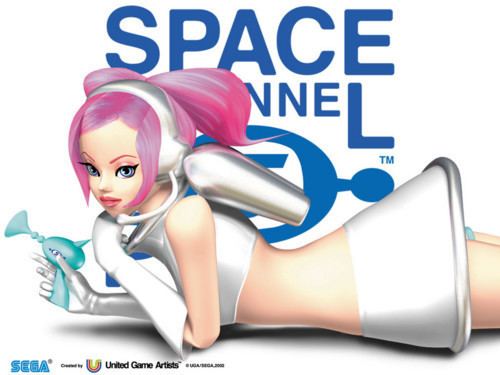 | ||||||||||||||||||||||||||||||||||
Composer(s) Naofumi HatayaKenichi Tokoi Mode(s) Single player, multiplayer Similar Sega games, Music video games, Other games | ||||||||||||||||||||||||||||||||||
Space channel 5 spaceport introducing ulala
Space Channel 5 (スペースチャンネル5, Supēsu Channeru Faibu) is a music video game developed by United Game Artists under the direction of Tetsuya Mizuguchi and published by Sega. During gameplay, the game characters perform a sequence of moves to the beat, such as steps and shots, which the player must reproduce with corresponding button presses. The game's theme song, Mexican Flyer, was composed by Ken Woodman in the 1960s. Space Channel 5 was first released in Japan in 1999 and North America and Europe in 2000 for the Dreamcast; it was later released for the PlayStation 2 in Japan and Europe in 2002 and in North America as Space Channel 5: Special Edition in 2003; and then ported by THQ to the Game Boy Advance as Space Channel 5: Ulala's Cosmic Attack in the same year. A sequel, Space Channel 5: Part 2, was released for Dreamcast (Japan only) and PlayStation 2 (Japan and Europe) in 2002, and on Steam on March 4, 2011.
Contents
- Space channel 5 spaceport introducing ulala
- Space channel 5 part 2 23 report 5 strobe action
- Gameplay
- Plot
- Characters
- Development
- Release
- Reception
- Lawsuit
- Space Channel 5 Part 2
- Ulalas Channel J
- Space Channel 5 VR Ukiuki Viewing Show
- Appearances in other games
- References
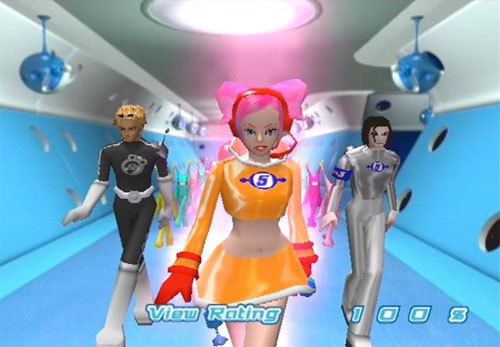
Space channel 5 part 2 23 report 5 strobe action
Gameplay
The games revolve around players controlling the funky space reporter, Ulala, as she grooves to rescue hostages and stop the enemy. Each level is split up into several parts, revolving around dance-offs or shoot-outs, during which the player must repeat commands spoken by the opponent (Up, Down, Left, Right and Shoot) in time to the rhythm. Dance-offs involve dancing against an opponent, with some routines differing depending on the player's performance, while shoot-outs require players to shoot attacking enemies and rescue hostages. Successful moves increase ratings while making mistakes will lower ratings and cause the player to lose hearts, possibly causing them to lose hostages. If the player loses all their hearts during certain battles, or if the ratings drop too low, the player will have to restart the level. Clearing the game unlocks an alternate story mode with some differences.
Plot
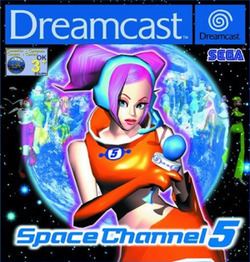
Space Channel 5 takes place five hundred years in the future, where interstellar television stations fight for ratings. Ulala is a new reporter for one such station, Space Channel 5, joining up with them having previously been saved by one of their reporters ten years ago. When a strange alien race known as the Morolians start kidnapping hostages and forcing them to dance, Ulala is sent in to report the news and rescue the hostages with her funky moves. The Morolians aren't the only problem, however, as Ulala must also contend with rival reporter, Pudding, and pirate broadcaster, Jaguar. As Ulala investigates further into this incident, she starts to learn that not everything is as it seems.
Characters
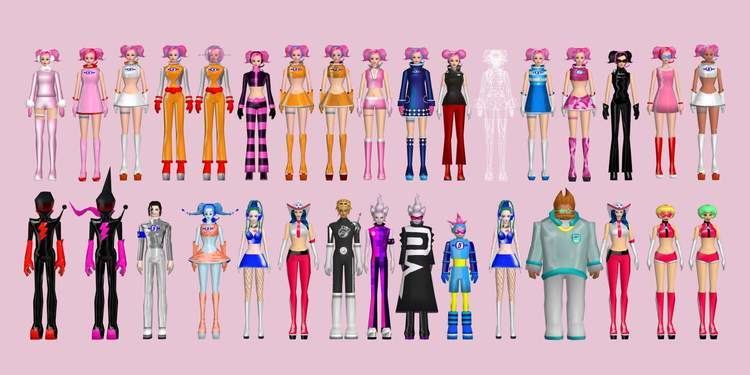
Development
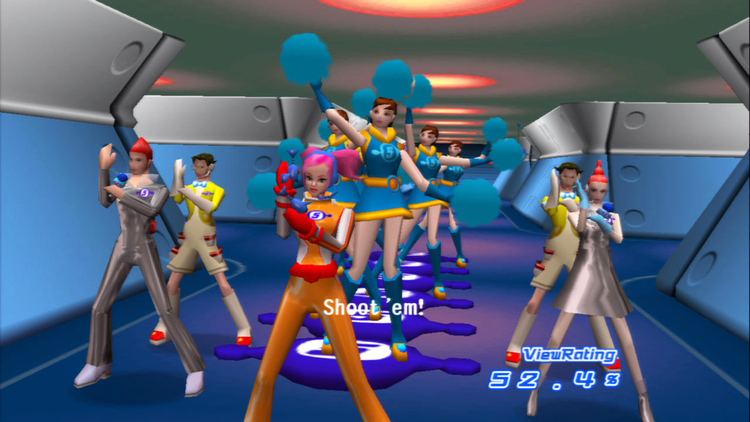
In discussing the study of target demographics, producer Tetsuya Mizuguchi related the story of designing Space Channel 5, which was at first a vague assignment from Sega that asked only that Mizuguchi design a game with a broad enough appeal to draw in even casual female gamers. "This was the first I'd heard of casual female gamers", he said, "so I didn't really know what to do. I personally interviewed a lot of young girls, trying to find out what they like." Women, he says, tend to enjoy puzzle games, while male gamers "want to be on top, they want to accomplish something and be the champion." It's difficult, he insists, to create a game that appeals to both males and females on an equal level.
Mizuguchi has also stated that Space Channel 5 was inspired by the dance troupe Stomp. He highly enjoyed the performance, and began thinking why musicals were so much fun, but more importantly "How can we get this feeling into an interactive process?". It was then that Space Channel 5 was born.
Michael Jackson makes a cameo appearance as Space Michael in Space Channel 5, near the end of the game. The May 2007 issue of EGM contains a quote from series creator Tetsuya Mizuguchi concerning what it was like to work with Jackson: "We were in the middle of production of Space Channel 5, in 1998 or 1999. I got a call from the U.S. from my partner - the executive producer of Space Channel 5 - and he said, 'Oh, Michael wants to act in Space Channel 5.' I said, 'Who's Michael?' 'Who is Michael Jackson?' he said, 'The Michael Jackson - the real Michael Jackson'. My partner had shown him the 60-to-70 percent complete version, when it was almost at the end of the game. We had one month to finalize. But Michael wanted to do something, so we suggested that if he was OK with it, we could program the people in the game to do the Michael Jackson dance when taken over by aliens. He said 'yeah.' We initially had five aliens who danced. One of them became Michael Jackson."
He had a more prominent role in Space Channel 5: Part 2 where he became the new head of Space Channel 5. While Ulala is distracted by a fake scoop, the headquarters are attacked and Space Michael is kidnapped by Purge and the Rhythm Rogues and has to be rescued by Ulala in a level featuring several of Jackson's trademark dance moves. He then joins Ulala in facing up against Purge. In both versions of the game, Jackson speaks in English, which is subtitled into Japanese in the Japanese version.
Release
Space Channel 5 was first released in Japan for the Dreamcast on December 16, 1999. It was later released in the United States on June 4, 2000 and in Europe on October 8, 2000. The game was given a budget DriKore release in Japan on December 21, 2000 in simpler packaging. In 2002, Space Channel 5 was ported to the PlayStation 2. It was released in Europe on March 15, 2002 and in Japan on December 12, 2002. It was released in North America on November 18, 2003 as part of a sole package called Space Channel 5 Special Edition that contained both Space Channel 5 and Space Channel 5: Part 2. A port of the game for the Game Boy Advance, titled Space Channel 5: Ulala's Cosmic Attack, was developed by ART.co and released by THQ in June 2003 as part of a deal to make GBA games based on Sega properties.
Reception
The PlayStation 2 versions received "favorable" reviews, while the Game Boy Advance version received "mixed" reviews, according to video game review aggregator Metacritic.
USA Today gave the Dreamcast version all four stars and said it was "all about fun, and Channel 5 delivers with a song." Entertainment Weekly gave the same version an A− and said that "gamers of all ages undoubtedly will want to help Ulala get her groove back — if not get their hands on a pair of those boots." The Village Voice gave the GBA version a score of eight out of ten and said that the controls were "not fully reliable, and graphic-wise, size of course matters. But the cutesy, candy-colored "femininity" and gameplay remain."
Lawsuit
In early 2003, Lady Miss Kier, formerly of the band Deee-Lite, initiated a lawsuit against Sega corporation for allegedly stealing her former persona and using it as the basis of a video game character. The lawsuit was based on accusations of copying her look of knee-high boots, short skirts and a pink ponytail, for Sega's Ulala character design.
Lady Miss Kier (real name is Kierin Kirby) claimed that Sega offered to pay her $16,000 to license her name, image and songs for the game, though she rejected their offer. Kirby later learned that the videogame maker went ahead and used her resemblance anyway, and she decided to initiate the lawsuit. She ultimately lost the suit and a later appeal and was liable to pay Sega's legal fees of $608,000 (reduced from $763,000 requested). In 2008, her single "Groove Is in the Heart" was licensed for use in the Sega video game Samba de Amigo for the Nintendo Wii, ironically appearing in a stage featuring Ulala.
Space Channel 5: Part 2
Space Channel 5: Part 2 was released in Japan on February 14, 2002 both for the Dreamcast and PlayStation 2. The PlayStation 2 version was released in Europe (except for the UK) on February 12, 2003, and in North America as part of special edition package with the first game on November 18, 2003. Space Channel 5 Part 2 (Limited Edition) was released in Japan featuring a carrying case and a set of large headphones. Improvements include real-time backgrounds as opposed to Part 1's rendered videos and stills. An HD version was released on Xbox 360, PlayStation 3, and Windows in early 2011. It was also included in the Sega Dreamcast Collection.
Ulala's Channel J
Ulala's Channel J was released for the Vodafone.
Space Channel 5 VR: Ukiuki Viewing Show
Space Channel 5 VR: Ukiuki Viewing Show (スペースチャンネル5 VR ウキウキ★ビューイング ショー) was announced in September 2016 as a title developed by Grounding Inc. Following a playable demo at the Tokyo Game Show 2016, the game still has no confirmed platform or release date.
Appearances in other games
Ulala, along with other Space Channel 5 elements, have appeared in several other video games:
Ulala has also made a cameo in the 2001 film Josie and the Pussycats, where she is popular in the merchandising in a store that Wyatt visits to try out a demo CD.
